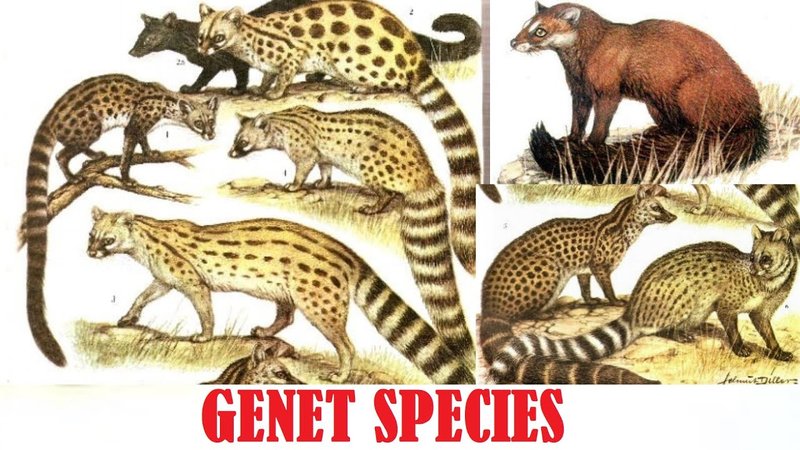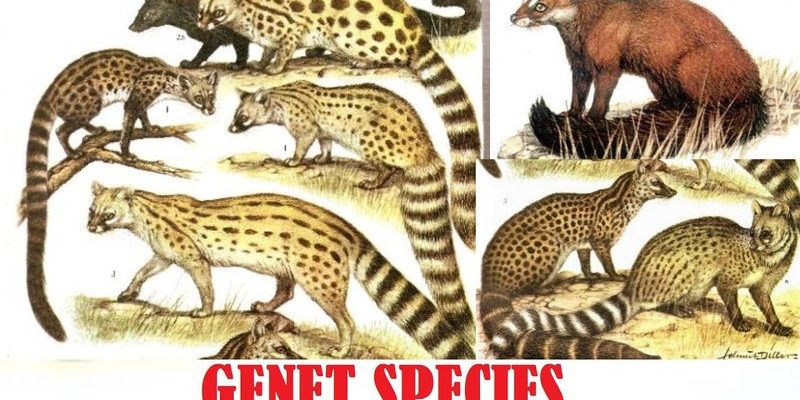
So, what exactly are genets, and why should we care about their evolutionary journey? Well, the story of the genet is more than just a tale of survival; it’s a glimpse into how species adapt, thrive, and sometimes struggle against the odds. In this article, we’ll dive deep into the evolutionary history of the genet, exploring their origins, adaptations, and what makes them such unique members of the animal kingdom.
What Are Genets?
Genets belong to the family Viverridae, which includes a variety of small to medium-sized carnivorous mammals. If you think of them as the distant cousins of cats and civets, you’re on the right track. Their body structure is quite distinctive: they have elongated bodies, short legs, and bushy tails, which give them an elegant appearance.
These creatures are primarily nocturnal, which means they come alive at night to hunt and explore. Their diet mainly consists of insects, small mammals, and fruits, showcasing their adaptability to different environments. Basically, if you were a small furry creature, getting nibbled by a genet wouldn’t be at the top of your to-do list!
You might be wondering where you can find these charming critters. Genets are scattered across Africa, with a couple of species making their home in parts of Europe and the Middle East. They thrive in various habitats—from dense forests to open savannahs—demonstrating their incredible flexibility as a species.
The Ancestors of Genets
To understand the genet’s evolutionary history, we need to hop back in time, way before the modern genet existed. Genets share a common ancestor with other members of the Viverridae family, and genetic studies suggest that this lineage dates back around 20 million years. That’s a long time ago—think ancient forests filled with massive trees and unique animals that have since vanished!
Around this time, the ancestors of genets were likely small, agile mammals adapting to various habitats. They were probably quick on their feet, using speed and stealth to catch prey. It’s fascinating to think about how all these evolutionary pressures shaped them over the millennia into the skilled hunters they are today.
Interestingly, their evolutionary path wasn’t solely influenced by environmental factors. Shifts in climate, continental drift, and even competition with other predators played significant roles in the development of their traits. If you visualize a giant game of survival, the ancestors of genets were strategizing their moves to stay one step ahead.
Adaptations and Survival Strategies
When we talk about the genes of the genet, we’re not just referring to their DNA; we’re also discussing their remarkable adaptations that help them thrive. Genets have a few tricks up their furry sleeves. First and foremost, their ability to climb is a huge advantage. With their sharp claws and flexible bodies, they can scale trees and other structures to escape predators or find food.
Their nocturnal lifestyle also plays a key role in their survival. By hunting under the cover of darkness, they can avoid larger predators and competition for food. Think about it: while many animals are asleep, genets are wide awake, prowling for dinner.
Additionally, genets communicate through a variety of sounds and scent markings. This helps them establish territories and find mates. Their ability to adapt their communication methods further illustrates their evolutionary success. They’re not just surviving; they’re thriving!
Species Variations and Their Evolutionary Significance
The genet family is made up of several different species, each unique in its own right. The most common species, the common genet (*Genetta genetta*), is known for its distinctive spotted coat and long tail. But what’s intriguing is how these species have diverged from their common ancestors to adapt to their specific environments.
For instance, the African white-tailed genet (*Genetta maculata*) has adapted to a more open habitat and is often found in semi-desert regions. This species has developed body shapes and hunting techniques that suit its surroundings perfectly. It’s like having a tailor-manufactured suit that fits just right for the occasion—every aspect of its being has adapted to its environment.
Evolution isn’t just about physical traits, either. Behavioral adaptations also play a crucial role. Certain species of genets exhibit different hunting methods or social structures that enhance their survival in specific habitats. By studying these variations, researchers can learn a lot about how evolution shapes life on Earth.
Conservation Status and Challenges
Like many species, genets are facing challenges in today’s world. Habitat loss, primarily due to human activity, poses a significant threat to their populations. Urbanization, deforestation, and agricultural expansion are all shrinking the natural habitats where these animals thrive.
Additionally, genets are often victims of hunting and poaching. In some regions, their pelts are sought after, further putting pressure on their populations. Understanding the conservation status of genets is essential, as it can help inform protection efforts and policies aimed at preserving these remarkable creatures.
Efforts are underway in various parts of the world to monitor and protect genet populations. Conservationists work to create protected areas and promote coexistence between humans and wildlife. It’s crucial to keep these discussions going if we want to ensure that future generations can experience the magic of watching a genet move gracefully through its habitat.
The Importance of Genets in Ecosystems
You might be curious about why genets matter in the grand scheme of things. Well, these animals play an essential role in their ecosystems. As predators, they help maintain the balance of small mammal populations. A healthy population of genets can control the numbers of rodents and insects, preventing overpopulation that can lead to other ecological issues.
Moreover, genets contribute to seed dispersal, especially when they feast on fruits. They help spread seeds through their droppings, promoting plant growth and diversity in their habitats. It’s like a natural gardening service conducted by these agile little hunters!
Additionally, studying genets and their adaptations provides valuable insights into evolution and ecology. By understanding how these creatures navigate their environments and survive, researchers can learn more about the broader implications of biodiversity and conservation.
The evolution of the genet is a captivating journey through time, showcasing resilience, adaptability, and the intricate webs of life. From their distant ancestors to the agile hunters we see today, genets tell a story of survival amidst a constantly changing world.
As habitats shrink and challenges increase, it’s crucial to recognize the importance of protecting these remarkable animals. So the next time you hear about a genet, think of it as a symbol of nature’s ingenuity—a reminder of how life can adapt and thrive in unexpected ways. By fostering an appreciation for these creatures, we can help ensure that their evolutionary story continues for generations to come.

